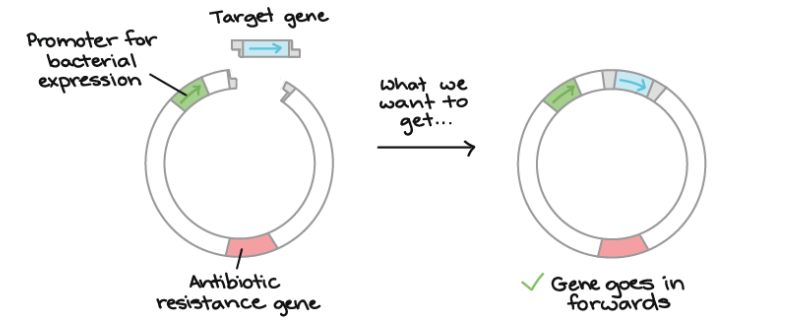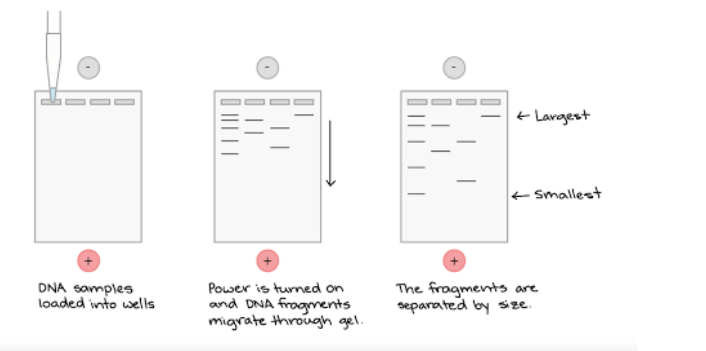D. Biotechnology
➢ Recombinant DNA generated by combining DNA from multiple sources to create a unique DNA molecule that is not found in nature
○ Ex. introduction of a eukaryotic gene of interest into a bacterium for production
➢ Polymerase Chain Reaction (PCR)
- Enables the creation of billions of copies of genes within a few hours
- DNA polymerase, DNA, and lots of nucleotides added in a small PCR tube
- Thermocycler
■ PCR machine that heats, cools, and warms PCR tubes many times
■ Each time the machine is heated, the hydrogen bonds break, separating the double-stranded DNA (Denaturation)
■ As it cools, primers bind to the sequence flanking the region of the DNA we want to copy, primers can form hydrogen bonds with ends of target sequence (Annealing)
■ When it is warmed, polymerase binds to the primers on each strand and adds
nucleotides on each template strands (extension)
■ REPEAT exponentially
➢ Transformation
- Transformation: process of giving bacteria foreign DNA
■ Genes of interest (vectors) placed into small circular DNA molecule called a plasmid
● Plasmid usually codes for antibiotic resistance
● Small ring of DNA found in bacteria that is replicated separately form the chromosomal DNA
● Not in all bacteria
■ 1. Extract the plasmid
■ 2. Add a restriction enzyme that will cut the ring open
● Restriction enzymes usually used to cut up foreign DNA, but are used by
scientists for this purpose
● Cuts palindromes, leaving “sticky ends”
● Always cut at the same nucleotide sequence
■ 3. Cut a piece of human DNA with same restriction enzyme
● Reverse transcriptase must be used to process DNA since prokaryotes do not have RNA processing to remove introns - DNA transcribed and mRNA is processed, and then reverse transcriptase turns mRNA back into DNA
● Reverse transcriptase also used by retroviruses
● Problems: vector may be too big, and there is no direct way to force the plasmid to accept the vector
■ 4. Mix the cut plasmids with the cut human DNA-some will align right due to their sticky ends
● Ligase used to glue ends back together
■ 5. Allow bacteria to take plasmid back in
● Heat shock/electric shock used to change membrane so plasmid can reenter easily
■ 6. Allow to reproduce

■ Not all bacteria will be transformed, can be tested by using antibiotic resistance
■ Allows the safe mass-production of proteins used for medicine
■ Important role in the study of gene expression
■ Transfection: putting a plasmid into a eukaryotic cell, rather than a bacteria cell
➢ Gel Electrophoresis
- DNA fragments can be separated according to their molecular weight using gel electrophoresis
- DNA put into wells on negative end, and when a current is run through the gel, the DNA moves across gel according to their weight
- Because DNA and RNA are negatively charged, they migrate through the gel toward the positive pole of the electrical field
■ Smaller fragments move faster and farther - Restriction enzymes used to create a molecular fingerprint
■ Places where enzymes cut and thus the sizes are unique for each person

➢ Stem cells also very important in biotechnology since they can turn into many different kinds of cells, but it is controversial due to harvesting methods
- Totipotent cell: capable of giving rise to any type of cell or a complete embryo
- Pluripotent cell:capable of giving rise to different cell types